
Our planet is home to many spaces that are so special that they could be unreal and deceiving. These places take us to the outer world, to sci-fi scenarios that defy the laws of physics and are full of spaceships and laser guns. Get your imaginary space suit because we are exploring landscapes that could belong to Mars but can actually be found in Spain.

The Riotinto Mining Park. | Shutterstock
Our journey through the stars begins in the Andalusian province of Huelva, in the municipality of Minas de Riotinto. This area’s long mining tradition dates back to the Roman Imperium but has been exploited by many civilisations throughout the years, such as the Arabs and the Brits. In the end, this high mineral concentration is the reason behind this spot’s distinctive red shades.
An authority in the field of space science also thinks of Riotinto as a place that could belong to the red planet. Many NASA experiments linked to Mars exploration have been conducted in the Riotinto Mining Park.
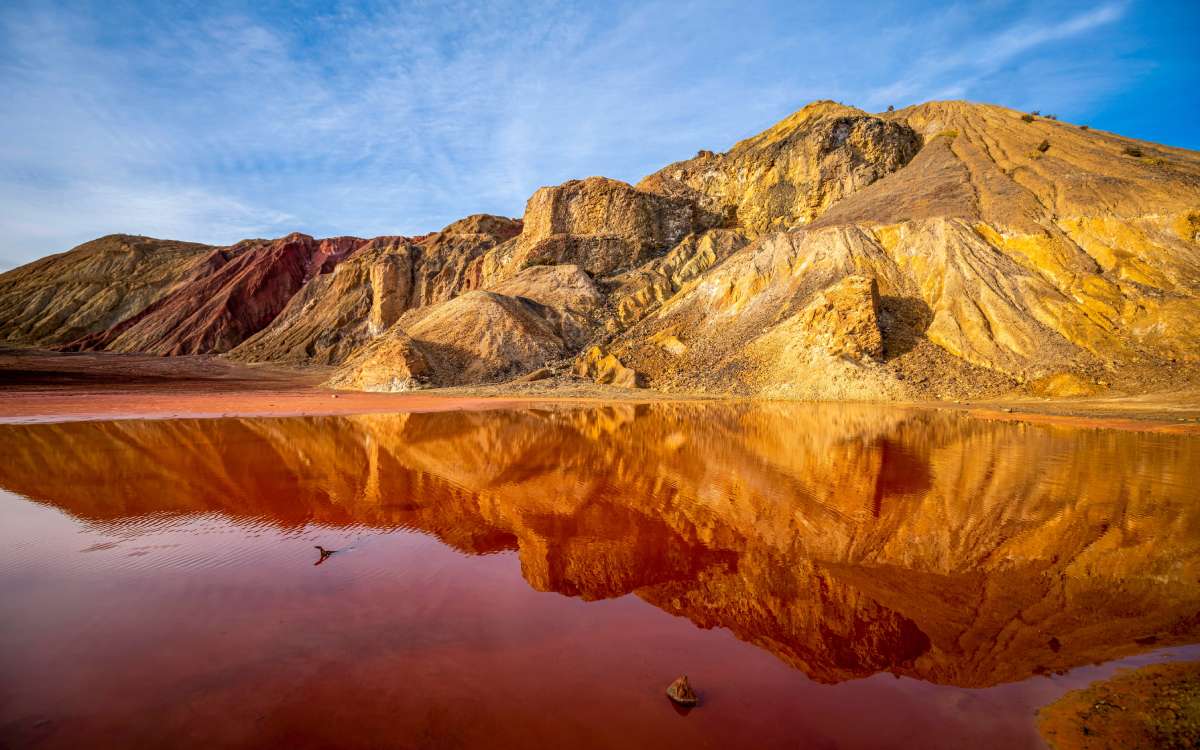
The mines of Mazarrón. | Shutterstock
Silver, lead, and zinc are some of the minerals that were once extracted from these mines in southern Murcia. Disused in the late 1970s, its desertion left behind a complex of solitary buildings and caves where mining activities used to be carried out. This place was exploited by the Romans too, and it is still possible to find remains of their presence.
A visit to the mines of Mazarrón means diving into a picture of ochre, yellow, and reddish shades that remind every traveller of Mars. A curtain with a post apocalyptic aura that allows us to walk through ruins, rusty structures, and deep red water bodies.
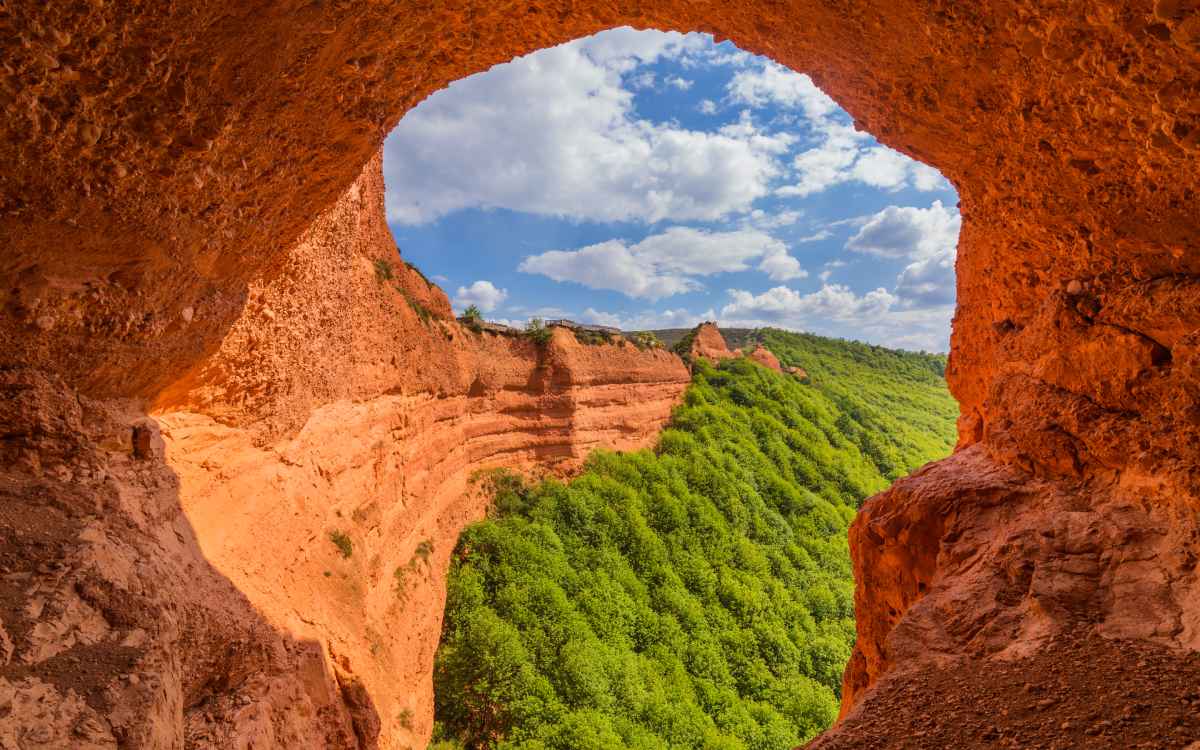
Las Médulas. | Shutterstock
It seems that the formation of scenarios that could belong to a George Lucas film was deeply influenced by Romans. It might be hard to believe, but the breathtaking postcard of Las Médulas is actually the result of the gold extraction processes by the most famous imperium that has ever existed. Actually, it is considered the largest ancient Roman gold surface mine.
Declared a Bien de Interés Cultural, a Natural Monument, a Cultural Space, and a UNESCO World Heritage Site, this is not just an interesting place, but it is also extremely beautiful. The many routes and paths that cross this formidable landscape lead us to a galaxy far, far away in the blink of an eye.
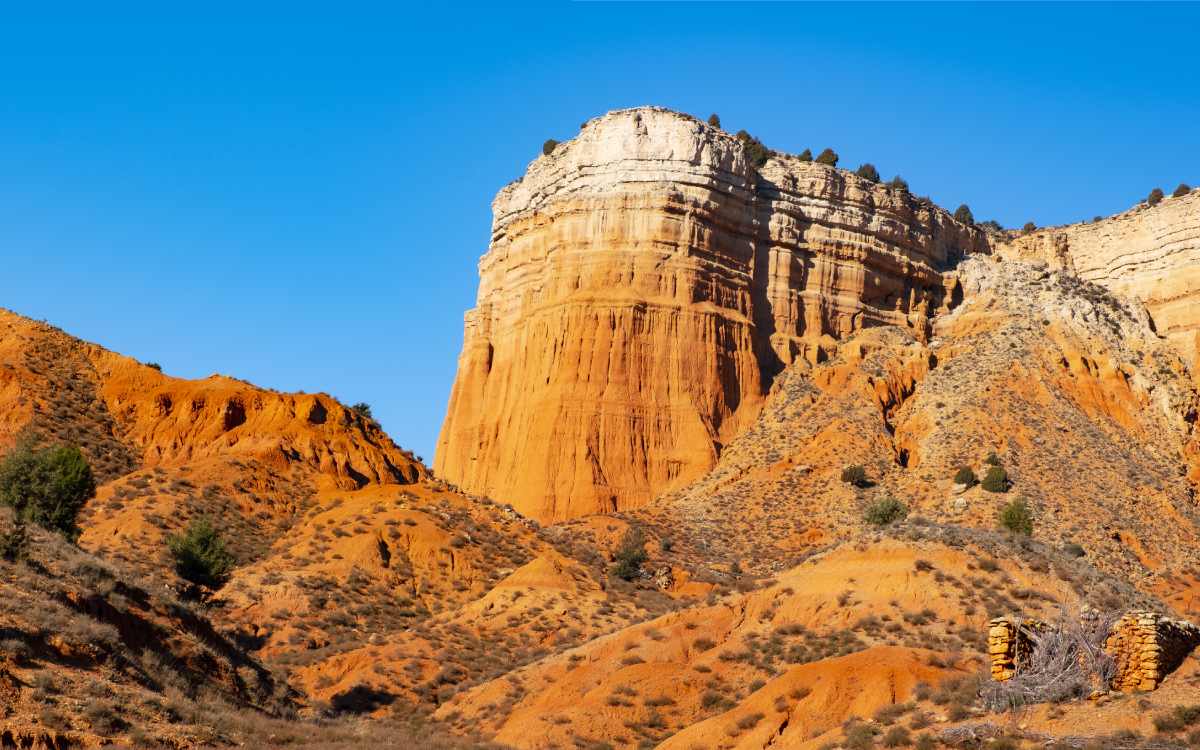
The Rambla de Barrachina. | Shutterstock
Less than 10 minutes by car from Teruel, a portal to the outer world awaits in the shape of tall, ochre cliffs. A wall of vertiginous, vertical cuts sculpted by water and wind erosion.
A 10-kilometre circular journey takes us to an extraordinary landscape whose colours evoke the arid desert guarded by vultures. A heart-stopping expedition that requires good shoes and a fully charged camera battery.
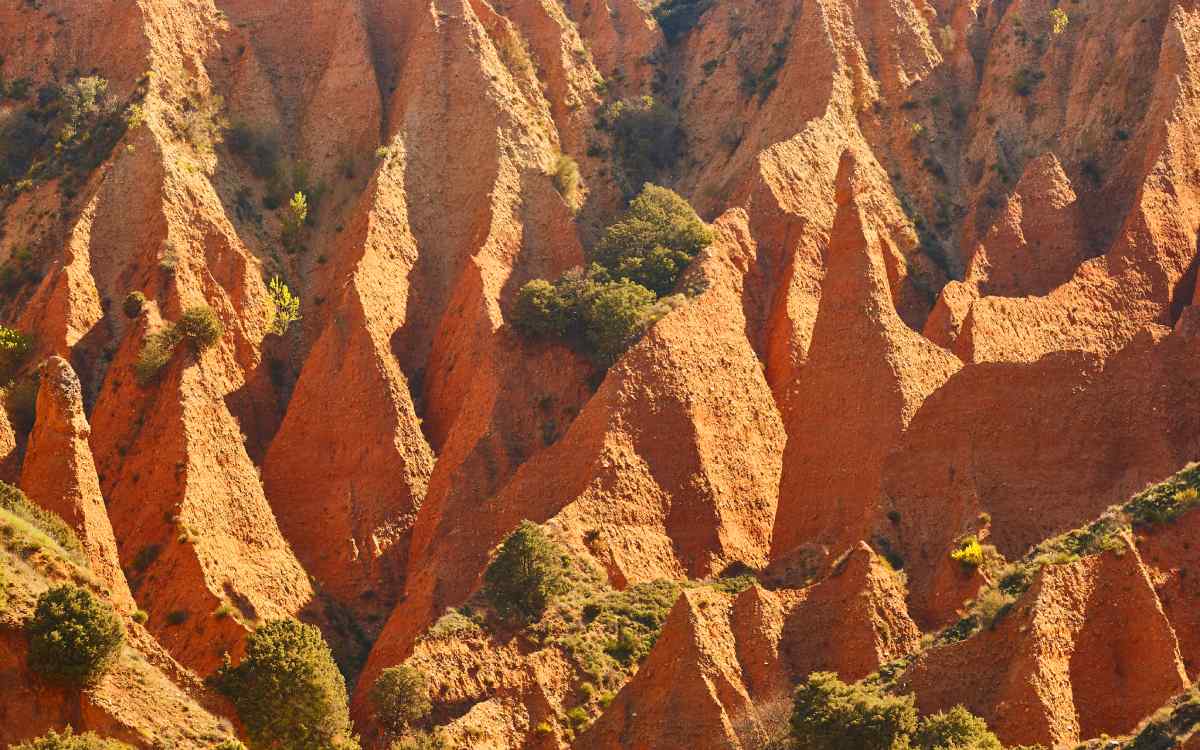
Las Cárcavas. | Shutterstock
This spot is known for its location near Madrid, since it sits an hour by car from the capital city, but it actually belongs to the province of Guadalajara. Las Cárcavas of Valdepeñas de la Sierra, also known as just Las Cárcavas, had to be on this itinerary on Martian lands.
This natural monument creates a fascinating labyrinth of orange, sharp shapes that have become a popular tourist attraction accessible from Madrid. Their clay soil has been sculpted by rain and water, developing an extraterrestrial appearance that surprises those who look at it for the first time. Undoubtedly, this place invites us to get lost in its routes and capture panoramic views from another planet.
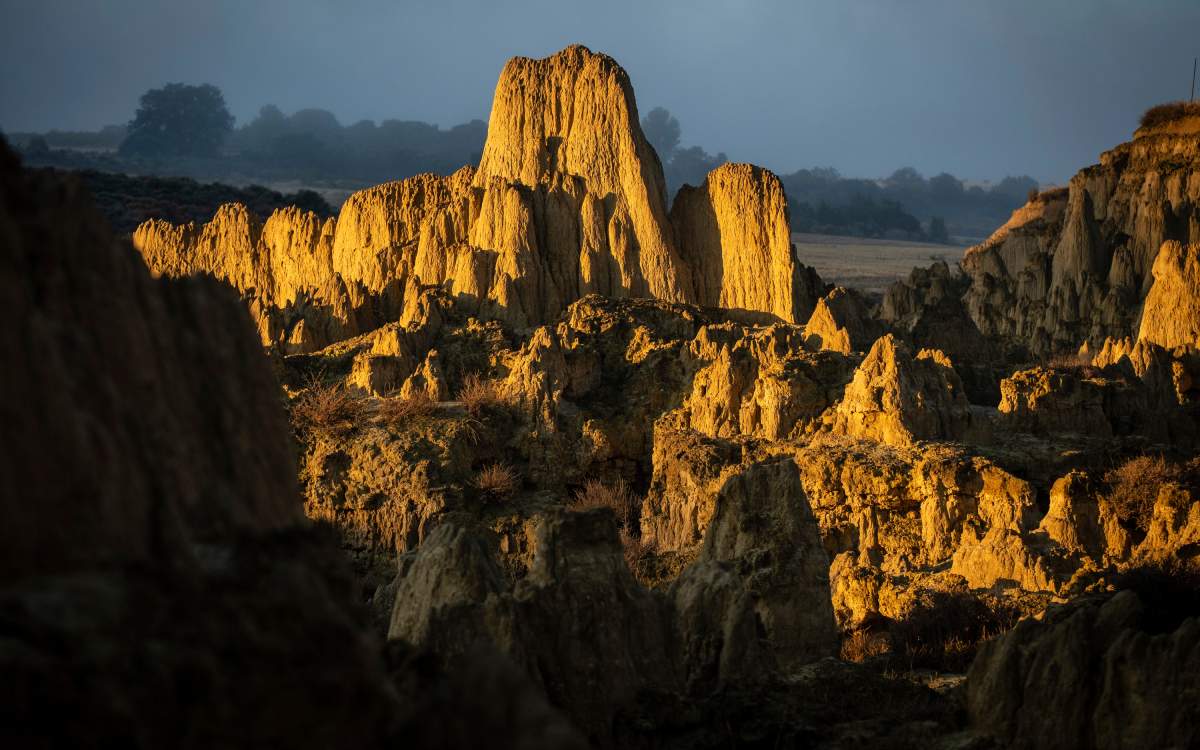
The Aguarales of Valpalmas. | Shutterstock
The Aguarales of Valpalmas have been compared to the Turkish Cappadocia. The reason is no mystery. The Spanish equivalent sits in the Cinco Villas region of Zaragoza, in Aragón. Just like Las Cárcavas, its clay geological formations are the result of the permanent erosion of water, an interesting phenomenon known as piping.
The outcome of this phenomenon is a unique landscape made of columns known as ‘fairy chimneys’. Cliffs, tips, and impossible nooks create a place that could be used as the setting of a space opera about aliens and futurist civilizations.
The Bardenas Reales of Navarra
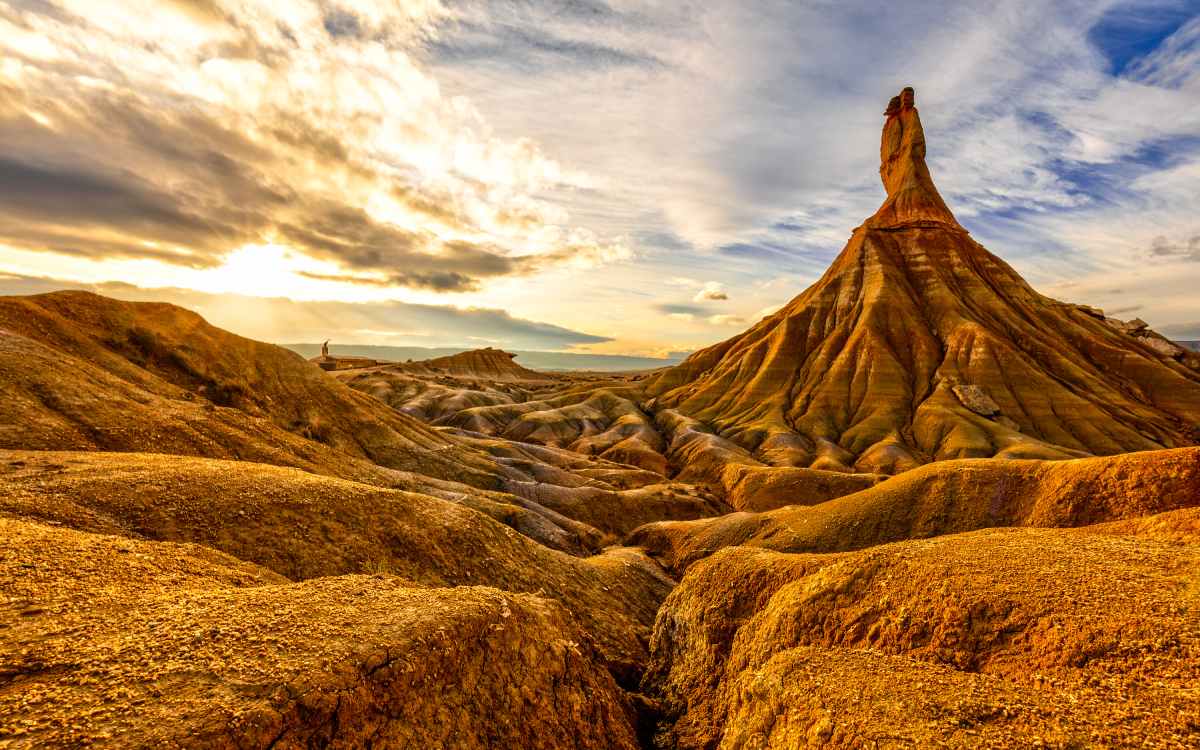
Bardenas Reales. | Shutterstock
The Bardenas Reales Biosphere Reserve and Natural Park is located in the Valle del Ebro and serves as a border between Navarra and Aragón. Also known as the Bardenas Reales or the Bardenas, they cover 41,845 semi-desert hectares in total. And every photographer ends up being seduced by them.
Breathtaking cliffs, hills, and plateaus shelter these surreal shapes sculpted by water and wind erosion. Birds of prey and steppe birds fly over a captivating landscape that invites us to fantasise about a journey through the red planet.
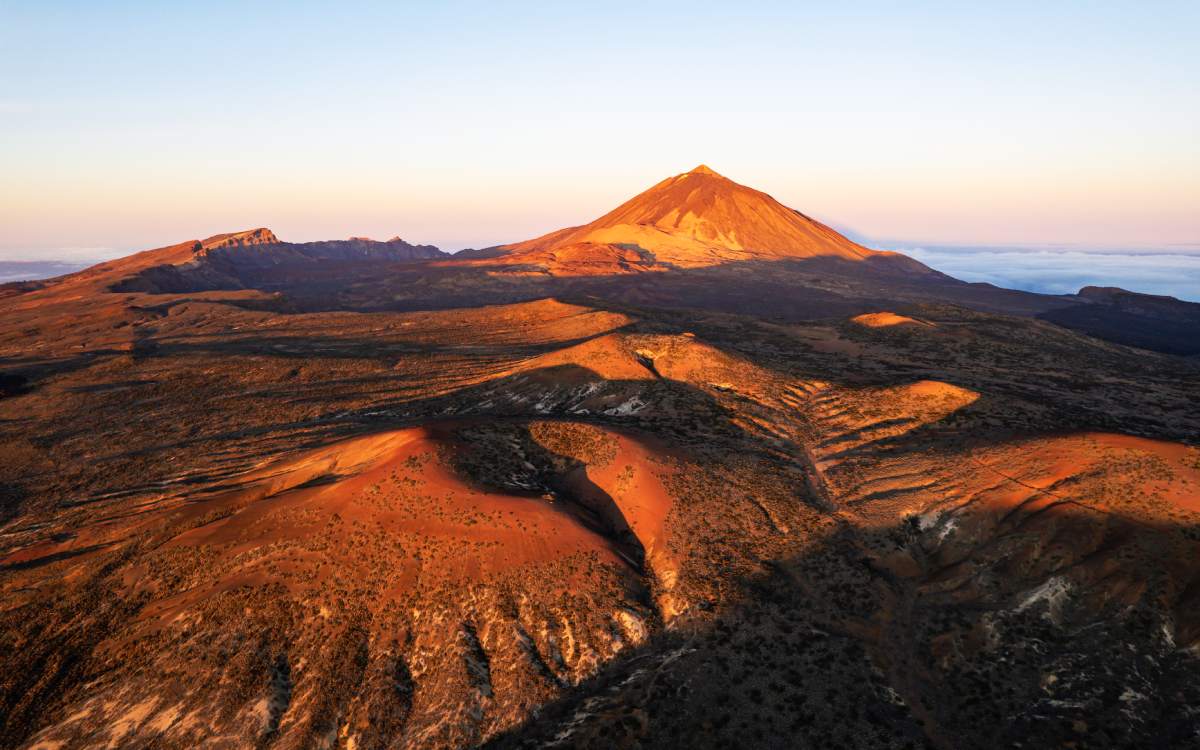
The Teide National Park. | Shutterstock
Of course, the Islas Canarias and their gorgeous, volcanic landscapes had to be on this list of places to visit Mars without leaving Spain. Tenerife’s Teide National Park was declared a World Heritage Site by UNESCO in 2007.
The Teide reaches 3,718 metres of height, which makes it the tallest peak in Spain. A majestic silhouette that shows its reddest dress every sunset and watches over the natural space it shares its name with. Endless cones, calderas and caves shape a breathtaking picture that could inspire a thousand utopias.

The Timanfaya National Park. | Shutterstock
There is another Canary island that should take part in this interstellar journey, and that is the always beautiful Lanzarote and, in particular, its Timanfaya National Park. It was slowly built by diverse volcanic eruptions in the 18th and 19th centuries and covers a total area of 5,000 hectares on the western coast of the island. Any sci-fi story could take place here.
More than 25 volcanoes and immense, virgin lava fields sit in the formidable Timanfaya National Park. The Montañas de Fuego (literally, ‘Fire Mountains’) could be found both in Tolkien’s books and in the heart of another planet. Anyway, visiting this volcanic scenario is probably very similar to exploring the planet that shares its name with the Roman god of war.
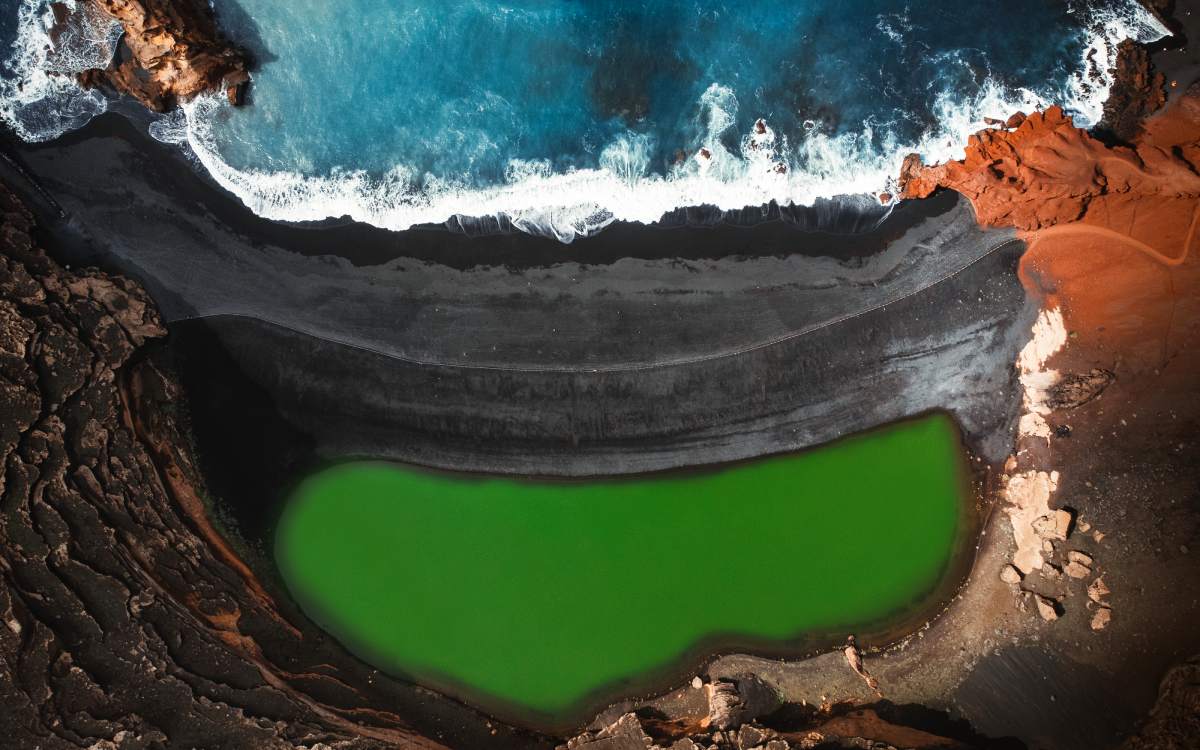
The Lago Verde. | Shutterstock
Our journey through extraterrestrial landscapes leads us to a final and unusual destination, also located in Lanzarote. In fact, it can actually be found in the Timanfaya National Park. The Lago Verde (‘Green Lake’) or Laguna de los Ciclos offers a view that could be part of that martian environment of our heads. An indomitable landscape of volcanoes and craters, a picture composed of green, red, black and blue shades where sea, sulphur and land hug each other.
This explosion of colours and rich, diverse nature fits perfectly with the Martian world we have imagined collectively. It concludes our journey through the universe without leaving Spain, proof of how we are surrounded by incredible treasures that can go unnoticed. In the end, reality meets fiction sometimes, and even the furthest and tiniest regions can hide landscapes we could never think of.
You can also read this article in Spanish here.
Follow us on Facebook!